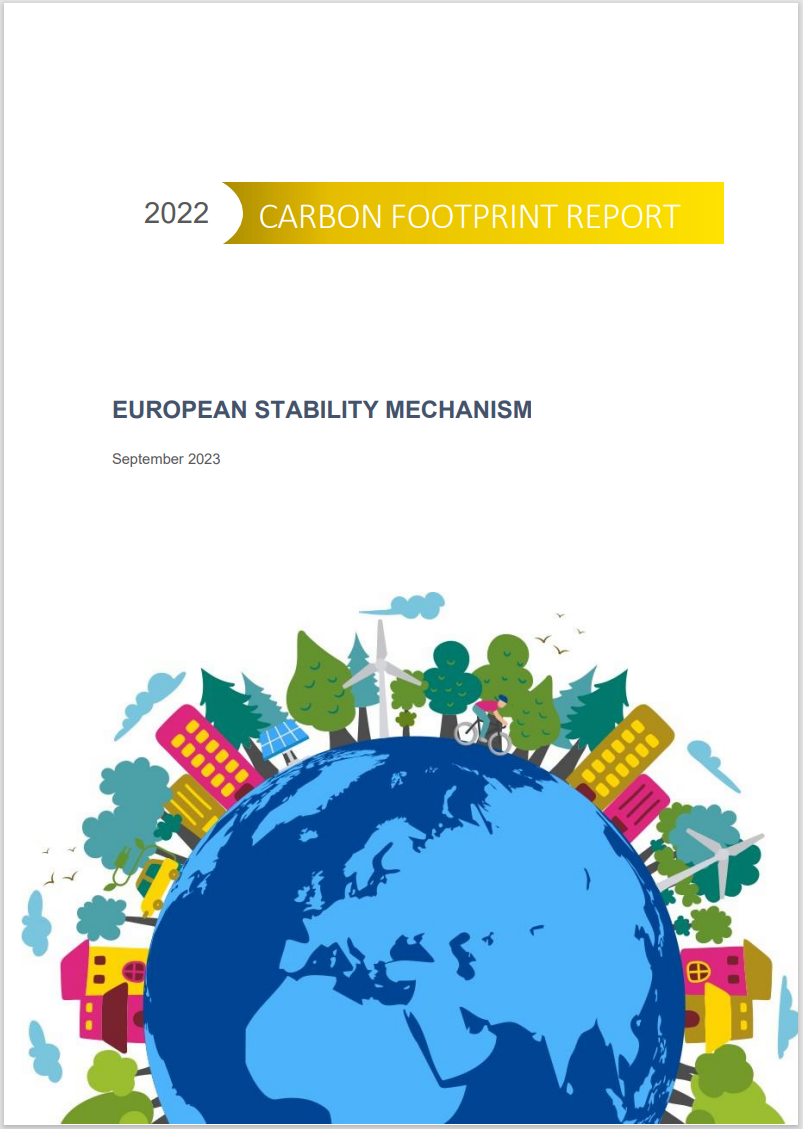As an international financial institution with a public mandate, the European Stability Mechanism (ESM) strives to implement environmental, social, and governance (ESG) best practices within its operations.
In line with the ESM’s continued commitment to improving its ESG considerations, this 2023 Carbon Footprint Report marks the fifth publication of the series. The report provides a comprehensive account of the ESM’s carbon footprint arising from its operations in 2022. It also compares the 2022 performance against previous years as well as its 2018 baseline year performance.
The calculations are performed with the assistance of Deloitte Luxembourg (Société à Responsabilité Limitée), which also conducted an additional review of the calculations and assumptions, following the four-eyes principle. The four-eyes principle ensured that the computation of ESM’s carbon emissions and their review were independently performed by two distinct teams.
As in previous years, carbon footprint estimates are based on an extensive review of internal and external documentation and activity data, as well as on exchanges with external data providers. The report is prepared in accordance with the guidelines from the International Greenhouse Gas Protocol - a Corporate Accounting and Reporting Standard (International GHG Protocol). Additionally, using the same methodology applied to the previous two reports as set out by EcoAct, a separate chapter with estimates on teleworking-related emissions has been included in this report (Chapter 2.3). This allows for more comparable measurement of the carbon footprint of day-to-day operations, particularly given that remote working has become more regular following the Covid-19 pandemic.
With the objective of generating more transparent and accurate reporting, the ESM continuously reviews and updates its carbon footprint methodology. As such, new emission categories such as fugitive emissions linked to refrigeration, emissions linked to electronic equipment obtained during the reporting year, and electricity emissions from ventilation, shared building consumption, and the fitness facility were added to the reporting scope. Naturally, such expansions in reporting scope also led to an increase in reported greenhouse gas (GHG) emissions.
During the Covid-19 pandemic, numerous national and ESM-specific measures were implemented to contain the spread of the pandemic and ensure the safety of staff members. These measures significantly altered the ESM’s business operations, initially leading to a strong decline in the institution’s GHG emissions in 2020 and a further modest decrease in 2021. In line with the easing of Foreword 4 Covid-19 containment measures and corresponding return to office and pre-pandemic mobility practices during 2022, GHG emissions linked to the ESM’s activities saw a proportional increase over this reporting year. Given these circumstances, reporting categories affected by Covid-19 restrictions, such as mobility-related emissions, have significantly increased compared to the previous year. However, compared to pre-pandemic emission figures, the ESM has maintained a trend of continued reduction of its overall consumption and GHG emissions.
